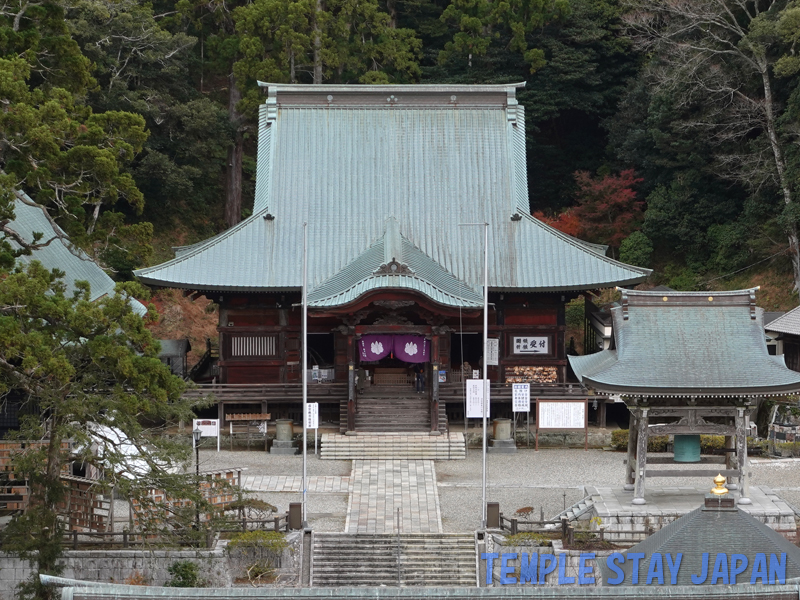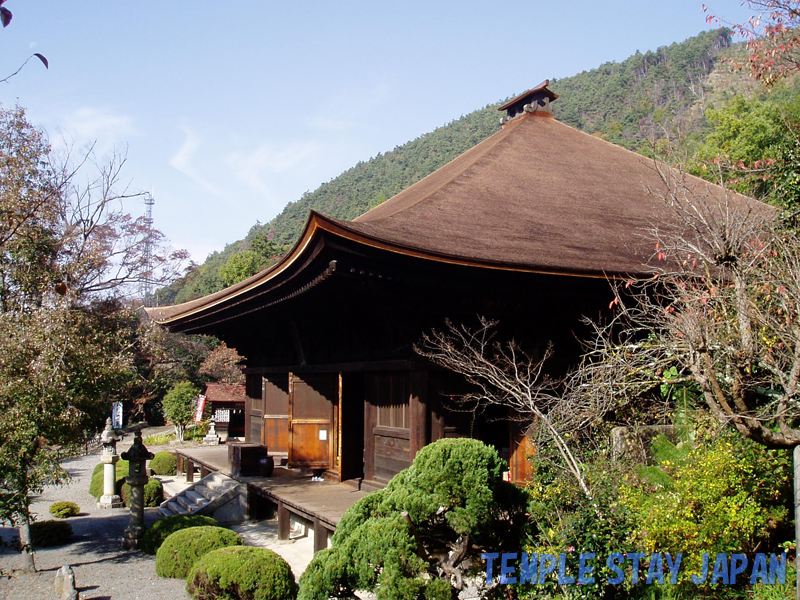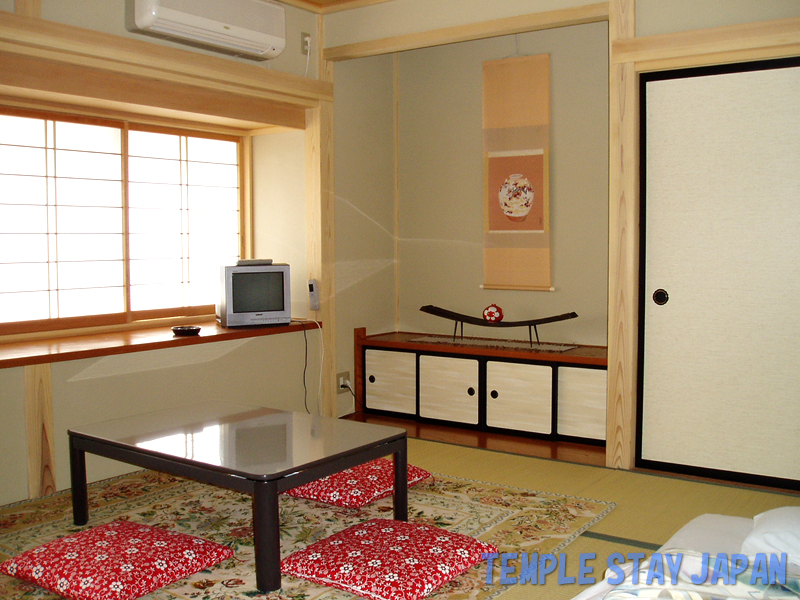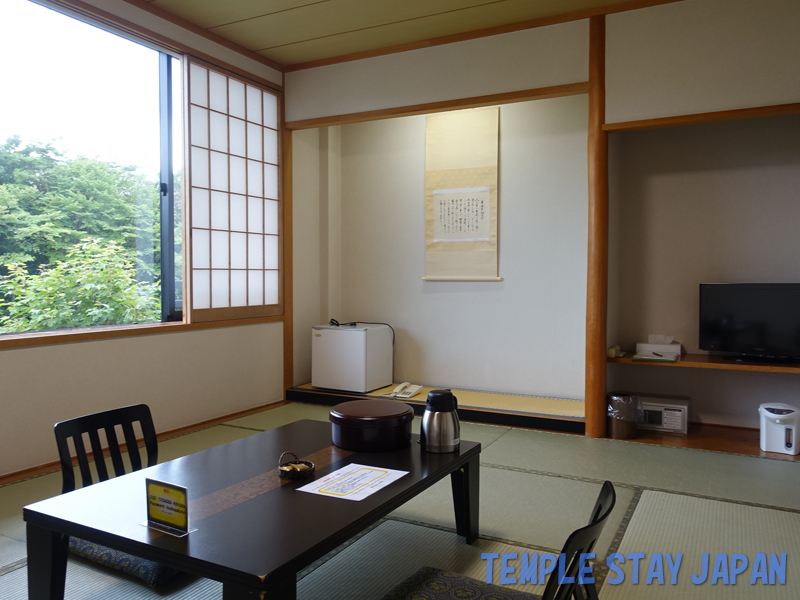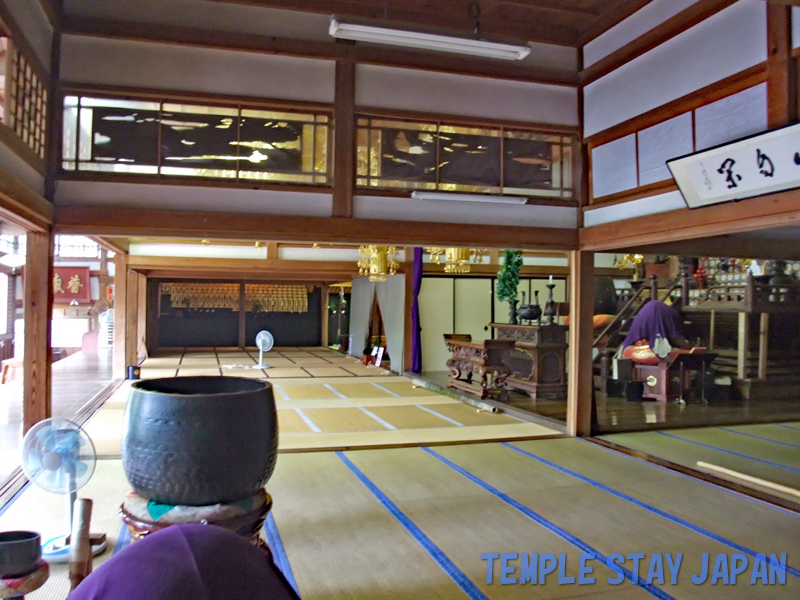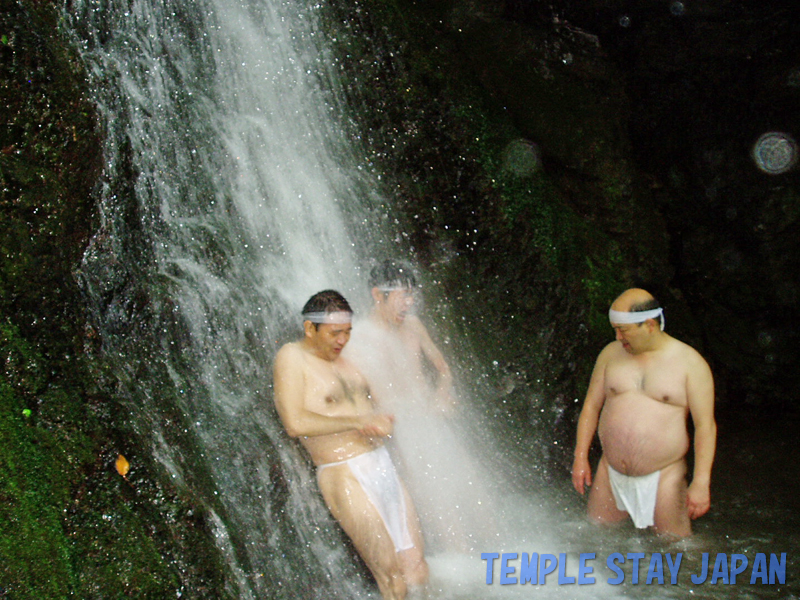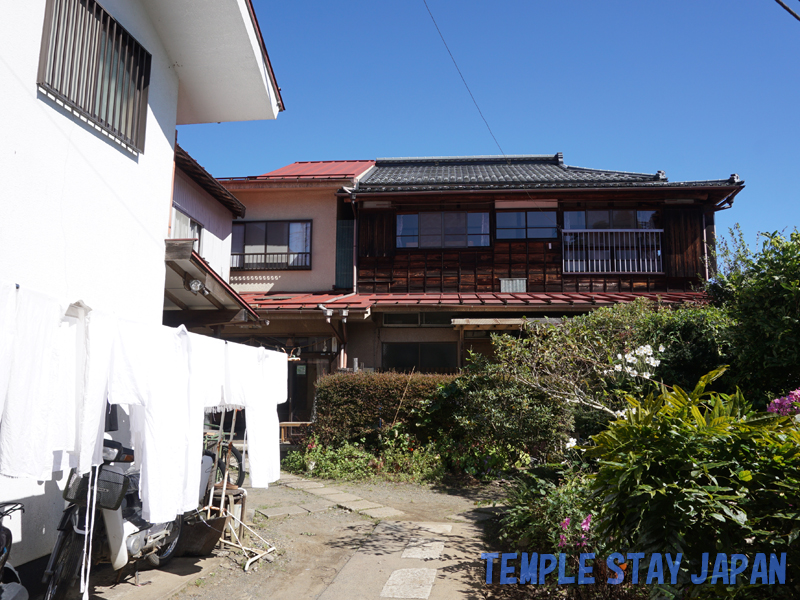stay– category –
-

Seityoji temple stay (Chiba)
Nichiren, a founder of the Nichiren sect performed ascetic practices in this temple. Although the shukubo's building is modern reinforced concrete construction, it is located inside the precinct and commands a view of the main hall. The service in the morning is conducted in the main hall and the Soshido hall. -

Daizenji temple stay (Yamanashi)
Daizenji Temple introduced grapes to Katsunuma for the first time; Katsunuma is now a grape production site. main hall (Yakushido), a national treasure is a typical main hall of esoteric Buddhism that represents the Kamakura period (1185 to 1333). In this hall, I received zazen instruction. -

Kichizyoin temple stay (Nagano)
I stayed here at the time when the principal image of Zenkoji-temple was open to the general public (this is only held once every seven years). I was able to attend the morning services and the kaidan tour as well as the guided tour of the precinct of Zenko-ji temple. -

Koyoen shrine stay (Tochigi)
This accommodation is directly operated by Nikko Toshogu Shrine, one of the most famous shrines in Japan. At the entrance there is a stump of a 700-year-old sacred tree. Koyoen features hot springs. There was no one else there in the early morning, so I had the bath to myself. It was a very luxurious experience. -

Soujiji-Soin temple stay (Ishikawa)
Souji-ji is an old temple of the Sodo sect which was opened in 1321. Together with Eihei-ji temple in Echizen, it enjoyed prosperity as the head temple of the Sodo sect. You are able to receive instructions on zazen practice and eat shojin vegetarian cuisine. You can stay for zazen only up to two nights in principle. -

Komadori-Sanso shrine stay (Tokyo)
Mount Mitake has been worshipped as a sacred mountain of Kanto and shukubo lodges have spread around the Musashi Mitake shrine. Among them, Komadori-Sanso is popular as a shukubo that offers takigyo (ascetic training of being hit by a waterfall) even to general people in Tokyo. -

Seizanso shrine stay (Tokyo)
This is a shukubo located in front of the shrine town of Musashi-Mitake shrine. Here they offer instructions on takigyo, Sho performances, a kind of Japanese musical instrument, ascetic training and instructions on meditation and breathing methods. -

Osumisanso shrine stay (Kanagawa)
Osumisanso is a shukubo of Oyama Afuri Shrine. Built in 1856, the interior still retains traces of its original appearance. There is a shrine on the second floor where you can receive prayers. Ancient documents and vessels have also been handed down. -

Ryokan-Takao shrine stay (Kanagawa)
Ryokan-Takao is a shukubo of Oyama Afuri Shrine. You can enjoy meals centered around Mt. Oyama's specialty tofu dishes. -

Sisisanso shrine stay (Kanagawa)
Shishi-sanso is a shukubo of Oyama Afuri Shrine. There are three Shishi (lion) statues in front of it. You can enjoy meals centered around Mt. Oyama's specialty tofu dishes.

